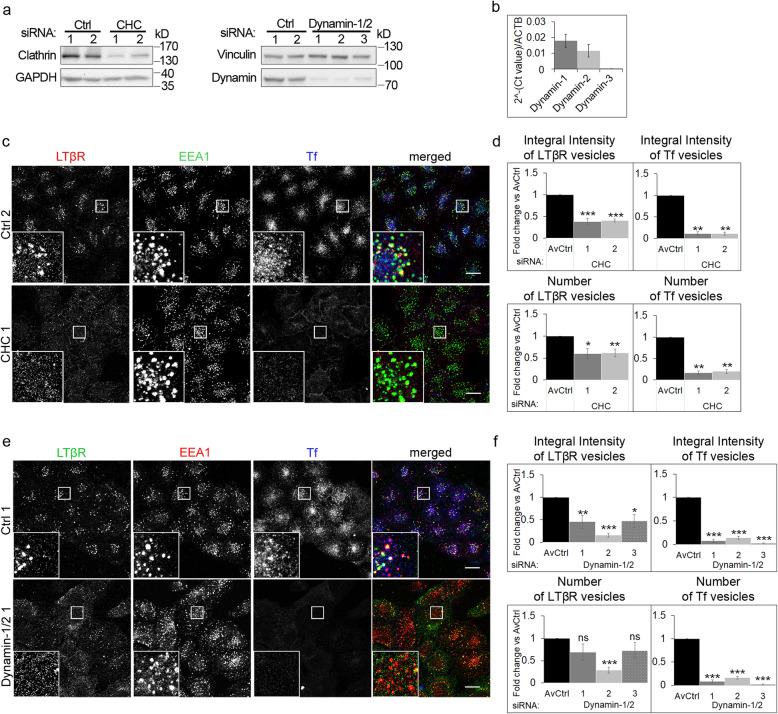Fig. 3.
Ligand-bound LTβR is internalized through clathrin-mediated and dynamin-dependent endocytosis. a A549 cells were transfected with siRNAs targeting clathrin (CHC, two oligonucleotides denoted with consecutive numbers) and dynamin-1/2 (three combinations of oligonucleotides targeting dynamin-1 and dynamin-2, see Methods) along with non-targeting control (Ctrl) siRNAs (two oligonucleotides or two combinations of oligonucleotides, see Methods). The knock-down efficiency was analyzed by Western blotting with the relevant antibodies. Vinculin and GAPDH were used as loading controls. Representative blots are shown. b mRNA levels of transcripts encoding: dynamin-1, dynamin-2 and dynamin-3 isoforms were analyzed in A549 cells by qRT-PCR. Data represent the means ± SEM, n = 4. c, e A549 cells were depleted of clathrin (c) or dynamin-1/2 (e), incubated with Ago and fluorescent transferrin (Tf) for 30 min and immunostained with antibodies against ligand-bound LTβR and EEA1. Insets show magnified views of boxed regions in the main images. Scale bars, 20 μm. Images show representative examples of cells transfected with one (out of two or three) relevant targeting or non-targeting siRNA denoted with numbers described in the Methods section. d, f Graphs represent quantitative analysis of microscopic images from experiments exemplified in c and e with respect to integral intensity and number of LTβR- and Tf-positive vesicles. Data represent the means ± SEM, n ≥ 3; averaged non-targeting controls (AvCtrl) set as 1; ns - P > 0.05; *P ≤ 0.05; **P ≤ 0.01; ***P ≤ 0.001 by one sample t test

